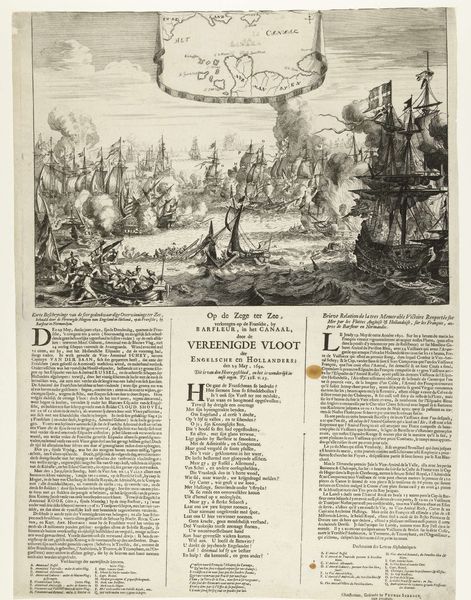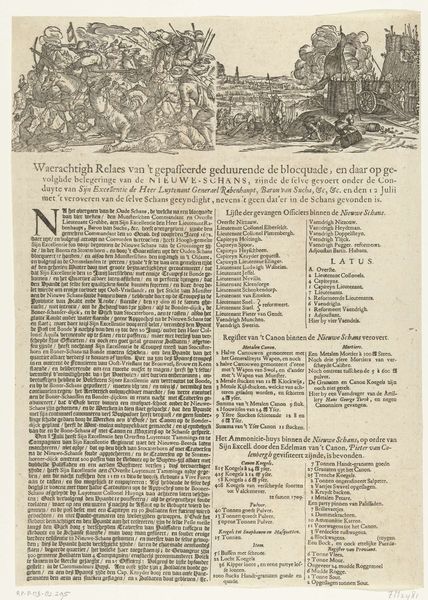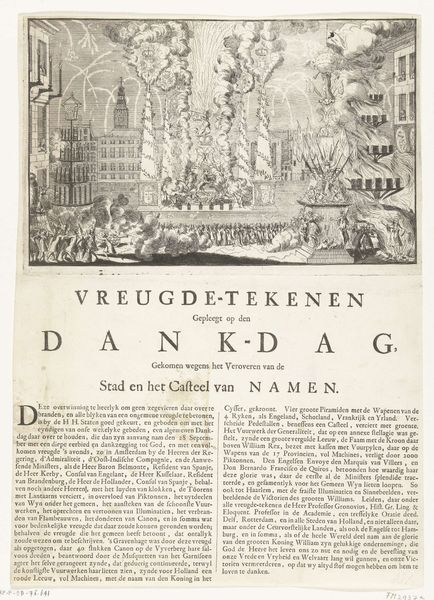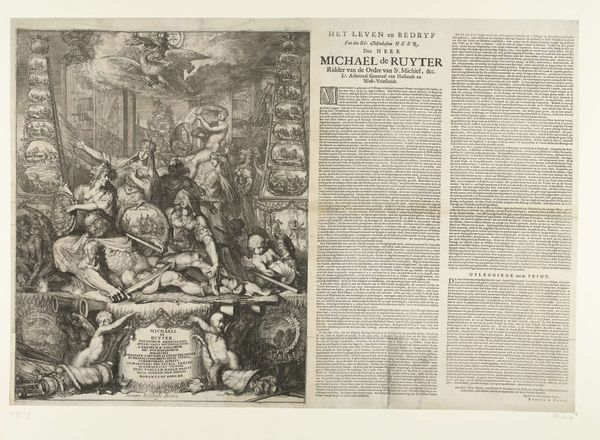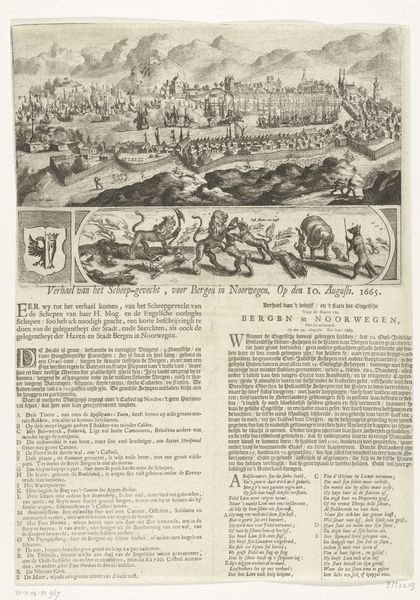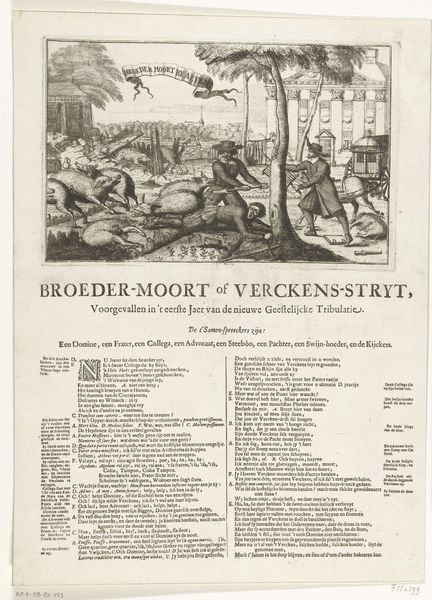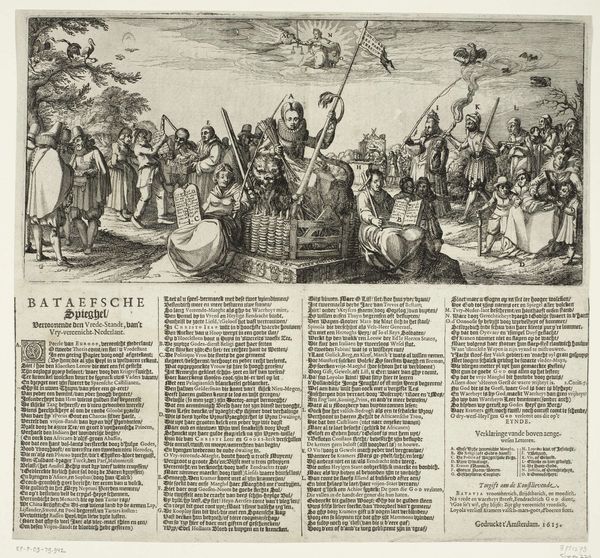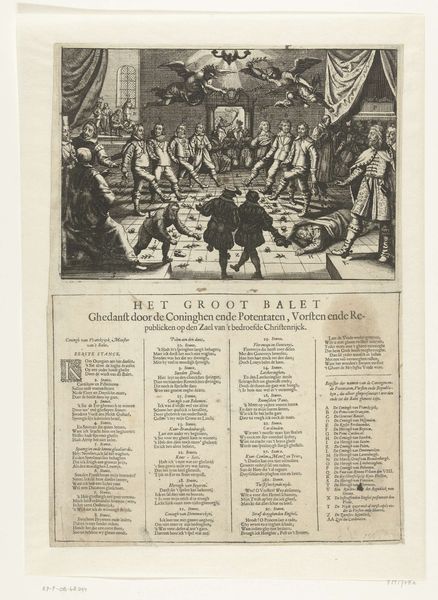
print, engraving
#
baroque
# print
#
landscape
#
history-painting
#
engraving
Dimensions: height 290 mm, width 403 mm, height 530 mm, width 410 mm
Copyright: Rijks Museum: Open Domain
Curator: Here we have Romeyn de Hooghe’s "Zeeslag bij Kijkduin, 1673", an engraving from 1673 held at the Rijksmuseum. I’m immediately struck by the sheer activity of it all – it’s chaotic and energetic. The ships, rendered with such detail, seem almost to be locked in a deadly dance. What do you see in this piece? Editor: I notice the framing – like a heroic display – with allegorical figures above the actual scene. It makes the event grand and historically important. How would you interpret that juxtaposition of realistic battle and symbolic figures? Curator: This layering speaks to the politicized nature of art in that era. Battles were not simply conflicts, but narratives to be shaped. Consider the Dutch Republic at this moment: a small nation contending with larger European powers. The engraving functions as propaganda, solidifying national pride and legitimizing their power on the seas. The allegorical figures emphasize the righteousness of their cause, even divinely sanctioned, perhaps. Editor: That’s interesting. So it’s not just a record of an event, but also an argument for Dutch dominance? Curator: Precisely! How might the Baroque style, which you have as a tag, be used to construct and convey a message of power? Editor: I guess the dramatic composition and high detail contribute to the sense of grandeur. And that print was intended for circulation, wasn’t it? How did that impact the piece’s message and the construction of Dutch national identity? Curator: Absolutely, this wasn't some painting accessible only to the wealthy; print culture allowed wider distribution, meaning the message, the idealized vision of Dutch power, could permeate society, impacting political consciousness in very palpable ways. Editor: I never considered that – it’s powerful to see how deeply intertwined art, politics, and national identity can be. Thanks! Curator: It's crucial to think about art as actively participating in history rather than just passively reflecting it.
Comments
No comments
Be the first to comment and join the conversation on the ultimate creative platform.
